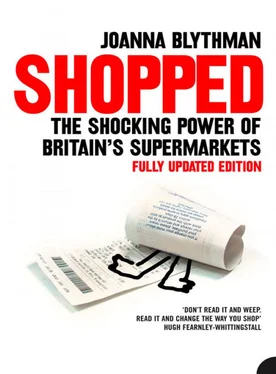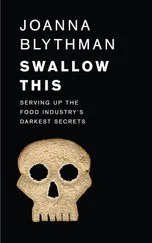SUPERMARKET SPACE
In June 2003, when a new Sainsbury’s Local, complete with cash machine, sliding doors and eight gleaming tills, opened opposite them, the owners of Belmont Mini Market in Chalk Farm were worried. A new shiny supermarket right across the street is every small shopkeeper’s nightmare. History shows that when a supermarket opens, local shopkeepers can moan and complain all they like, but it’s just a matter of time until all but the most exceptional amongst them lose just enough business to the newcomer to make their own enterprises unviable. But the Belmont Mini Market refused to lie down and be ignored. It had been open seven days a week, from seven in the morning until eleven at night, for the last eighteen years. Locals valued the service it provided, and in particular the pleasantness of the hard-working Sri Lankan owners. Belmont Mini Market joined forces with an especially appreciative customer, a creative communication agency, to make local people think twice before bypassing them for Sainsbury’s. With the agency’s help, the owners sent letters to local residents and printed fly-posters and stickers with photos of the Mini Market’s staff that read, ‘Sainsbury has got electric sliding door but please do not be forgetting us.’ They even posted a man with a placard outside Sainsbury’s to emphasise the point. Three months after the opening of Sainsbury’s, one of the owners, Mariathas Suthakaran, told me that although sales of some lines such as bread and milk were slightly down, customers were still coming into his store.
Chalk Farm’s residents and workers may not easily forget the endearing staff at the Belmont Mini Market, but statistics show that the UK collectively has forgotten thousands of other shopkeepers. The figures vary depending on the source and its classification of shops, but the overall picture is remarkably consistent, showing a steady decline in small shops as the supermarkets have progressively taken control of the nation’s shopping basket. The nation of shopkeepers has become a nation of supermarkets.
In 1950, supermarkets had only 20 per cent of the grocery market while small shops and traditional Co-ops had 80 per cent between them. By 1990, this situation had been more or less reversed, with supermarkets eating up almost 80 per cent of the grocery market. In 1998, when the Department of the Environment, Transport and the Regions (DETR) undertook what is considered to be the most comprehensive governmental assessment of the implications of food store developments, it confirmed a phenomenon that most consumers had already observed first hand. ‘Our research has shown that large foodstores can and have had an adverse impact on market towns and district centres … The level and consequences of impact will vary depending on the particular local circumstances … Smaller centres which are dependent to a large extent on convenience retailing to underpin their function are most vulnerable to the effects of larger foodstore development in edge-of-centre and out-of-centre locations,’ it concluded.
This study underlined just how dramatic the supermarket effect could be. When Tesco had opened a store on the edge of Cirencester in Wiltshire, the market share of town-centre food shops declined by 38 per cent. For convenience shops the study found that the damage was even more acute. In Fakenham in Norfolk, for example, it found that the opening of an out-of-town supermarket had caused a 64 per cent decline in market share for the convenience shops in the town centre. At Warminster in Hampshire, the decline was even more marked – 75 per cent. The trend has continued since the study. When Tesco opened a new 37,000-square-foot store in Hove in 2003, for instance, the effect on neighbouring retailers was almost instant. Within a week, small shopkeepers’ sales had tumbled. The local greengrocer said that he had hoped that Tesco would bring extra footfall into the area, but sales were down 25–30 per cent. It was the same story at the post office. ‘They [sales] are about 25 per cent down. Hopefully it’s only the effect of the opening week. If it is not, we will be stuffed,’ said postmaster Nayan Shah.
When the New Economics Foundation examined the phenomenon know as ‘Ghost Town Britain’ – the slow death of community life in small towns and villages – it probed the mechanism by which supermarkets suck life from local shops and reported:
Suppose a supermarket opens on the outskirts of a town and half the residents start to do one third of their shopping there. These people still do two thirds of their shopping in the town centre, while the other half of the population continues to do all its shopping in the centre. Although all the residents still patronise the town centre, its retail revenue drops about 16.7% – enough to start killing off shops. This is a perverse market dynamic; a loss to the entire community that not a single person would have wanted. It is also self-reinforcing: once the downtown starts to shut down, people who preferred to shop there have no choice but to switch to the supermarket. What begins as a seemingly harmless ripple becomes a powerful and destructive wave.
Statistics on small shops read like casualties of a curiously uneven war. In 2000, when the DETR Select Committee considered the impact of supermarkets, it noted that the number of independent grocers in the UK had fallen from 116,000 in 1961 to only 20,900 in 1997. Statistics compiled by the Meat and Livestock Commission using figures from the Institute of Grocery Distribution, Taylor Nelson Sofres and the Office of National Statistics show that there were only 23,960 independent grocers in the UK in 2001 compared to 62,000 in 1977.
The same pattern is mirrored in figures for specialist shops. Independent butcher’s shops, for example, declined from 25,300 to 8,344 in the same period. Roughly two out of every three butchers have gone out of business in the last twenty-five years. Between 1990 and 2000, supermarkets’ share of the fresh fish market increased from 21.4 per cent to over 66 per cent, while fishmongers’ market share fell to 20.3 per cent. Between 1997 and 2002, specialist stores like butchers, bakers and fishmongers closed at the rate of fifty a week. Figures logged by the Office of National Statistics show that the number of businesses selling food, tobacco and beverages fell by 37 per cent between 1994 and 2001; if decline persists at the same rate, another 10,000 businesses will have vanished by 2005 and the total number of local shops selling these goods will have been halved in just over a decade. Researchers at Manchester School of Management have predicted that if current trends continue there might not be a single independent food store left in the whole of the UK by 2050.
This projected disappearance of independent food shops is a disturbing possibility, not only because it erodes choice, but also because these shops produce more economic benefits for their immediate community than supermarket chains. It has been calculated that every £ 10 spent in a local food initiative (shop, farmer’s market, farm shop or box scheme) is worth £ 25 to the local economy because small local food businesses – by using local farmers, the nearest locksmith or printer and so on – support other local businesses. That same £ 10 spent in a supermarket produces just £ 14 worth of benefits for the local community.
Obviously the closure of small shops means job losses – and these losses are not compensated for with new supermarket jobs. The National Retail Planning Forum has calculated that new food superstores have, on average, a negative effect on retail employment. Its 1998 report said that every superstore opening resulted in a net loss in employment of 276 fulltime equivalents. A majority of supermarket jobs are part-time, so the arrival of supermarkets means that many fulltime jobs in the local community are replaced by part-time ones.
Читать дальше












